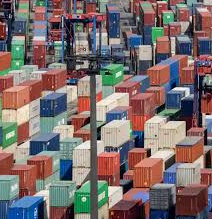Manufacturing and non-oil exports see substantial declines, but labor market tightness continues
Private-sector economists have lowered Singapore’s full-year GDP growth forecast to 1%, down from 1.4% in the previous quarter. This adjustment is driven by a weaker-than-expected performance in manufacturing and non-oil domestic exports (NODX). The economy is now projected to grow within a range of 0% to 0.9%, with nearly half of the respondents predicting this scenario.
In particular, the manufacturing sector is expected to contract by 4.4%, far worse than the earlier forecasted 1.3% decline. Similarly, NODX is predicted to fall by 10.5%, a sharp revision from the 5.5% drop forecasted earlier. These declines in manufacturing and exports have raised concerns about Singapore’s growth prospects for the remainder of the year.
Despite the gloomy outlook for growth, the labor market continues to show signs of resilience. Economists anticipate that the unemployment rate will fall to 2% by the end of the year, a slight improvement from the previous forecast of 2.1%. However, this tightness in the labor market could lead to sustained wage pressures, influencing whether businesses continue to pass on costs to consumers.
The overall GDP growth for Q2 missed expectations at 0.5%, a full percentage point below the forecast of 1.5%. For Q3, economists are projecting a growth rate of 1%, with a better second half of the year necessary to meet the revised full-year forecast.
The survey also pointed to moderating inflation expectations, with the median forecast for headline inflation reduced to 4.7% from 5% in June, and core inflation expected to remain at 4.1%. This easing in inflation could be offset by rising energy and food prices, driven by factors such as El Niño and high oil prices.
Looking to 2024, economists predict a rebound with GDP growth forecasted to rise to 2.5%. Inflation is expected to moderate to 3.1% for headline inflation and 2.8% for core inflation. Key risks to Singapore’s economic outlook include global slowdowns, particularly in China, as well as geopolitical tensions and supply chain disruptions. However, some analysts remain optimistic about the recovery in the tech sector and China’s reopening, although these risks are becoming less pronounced.








